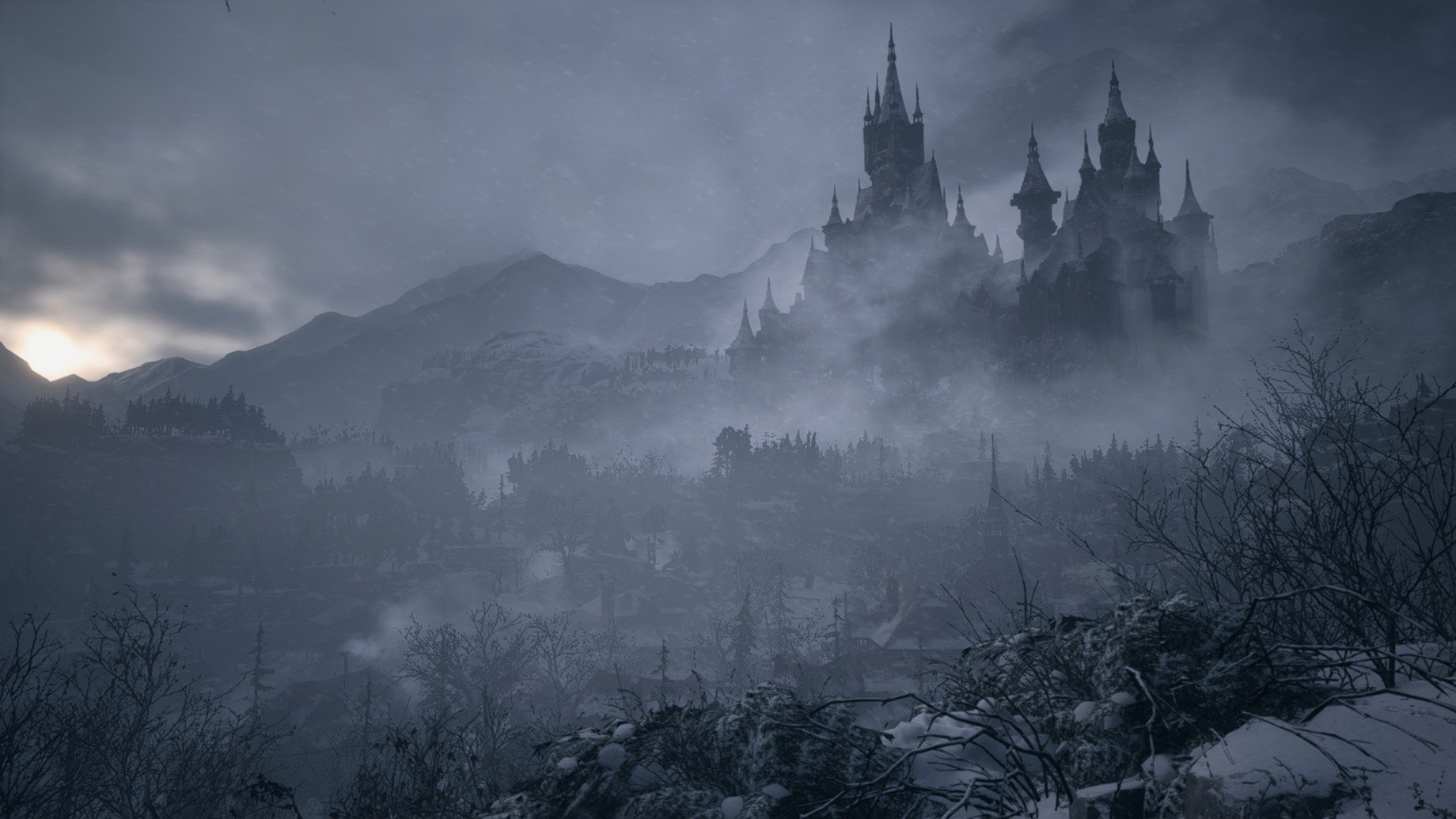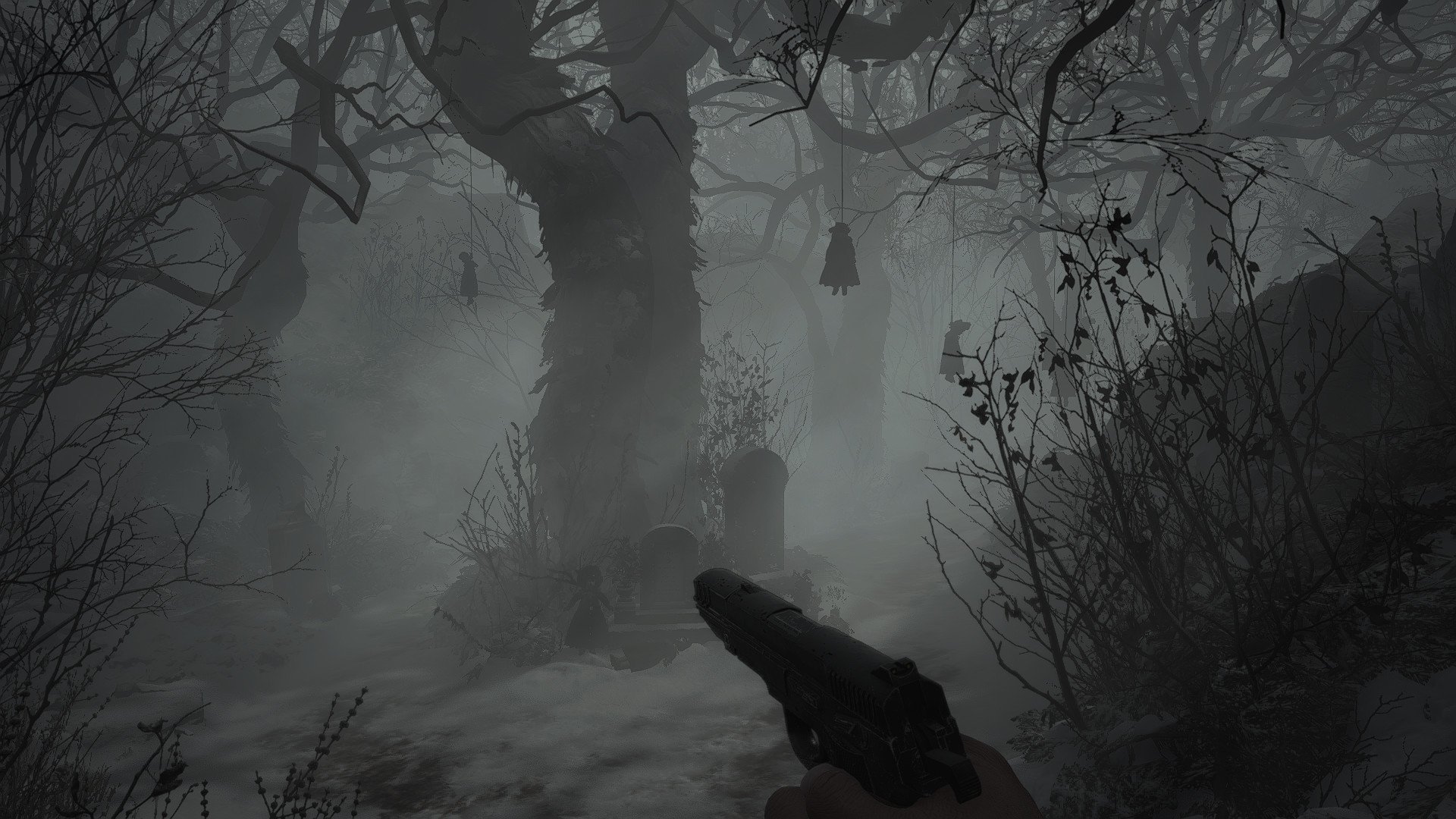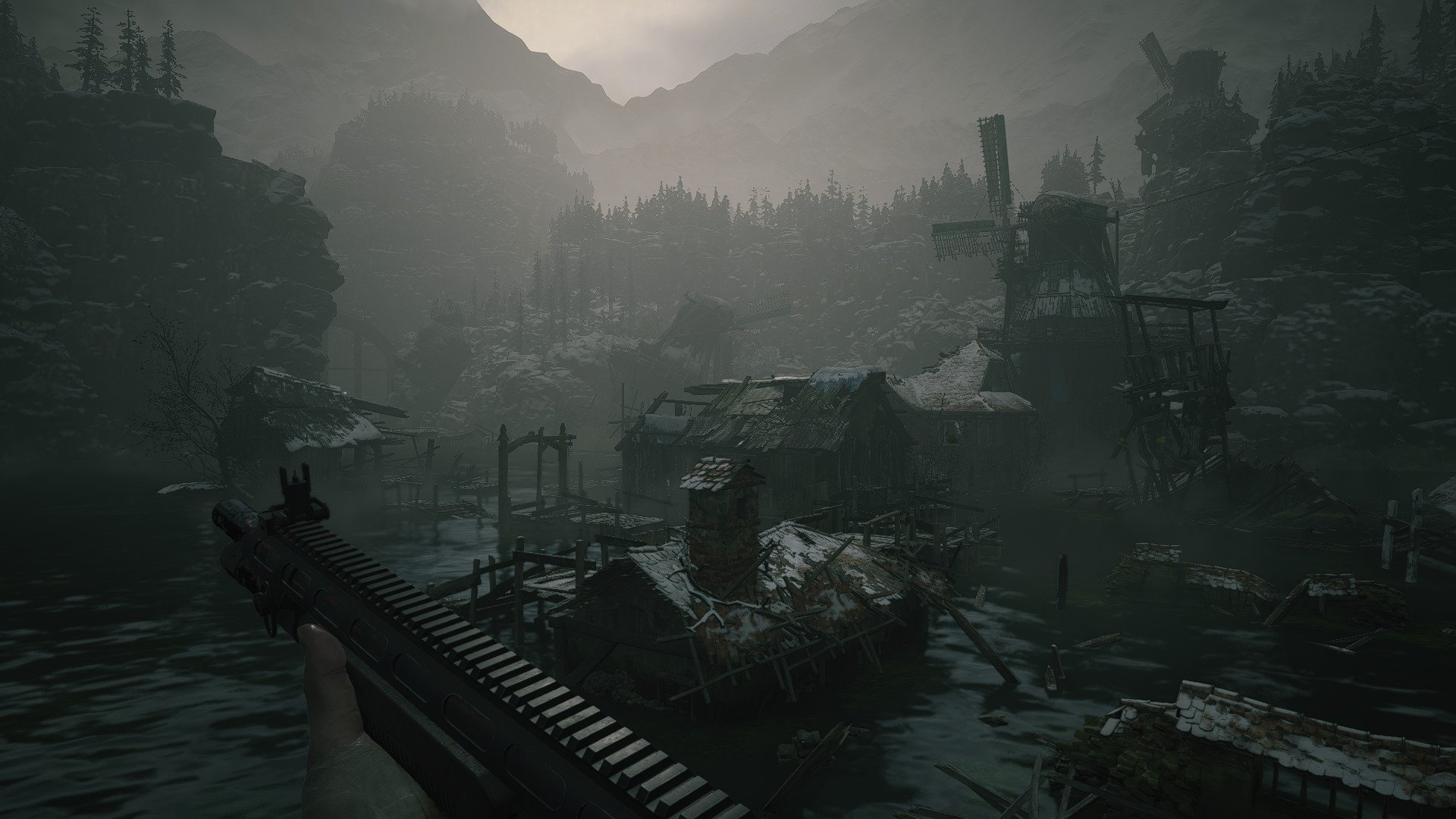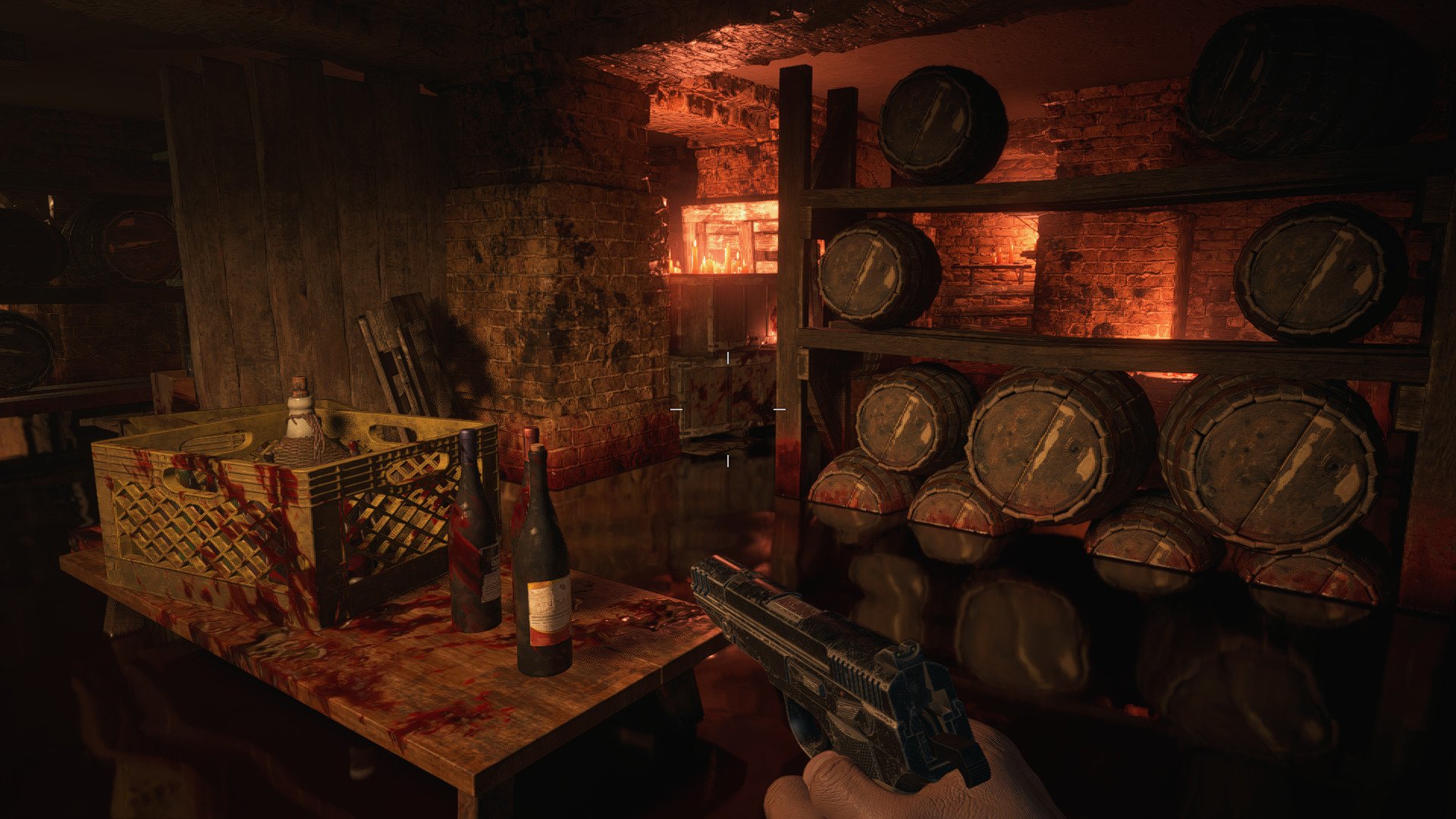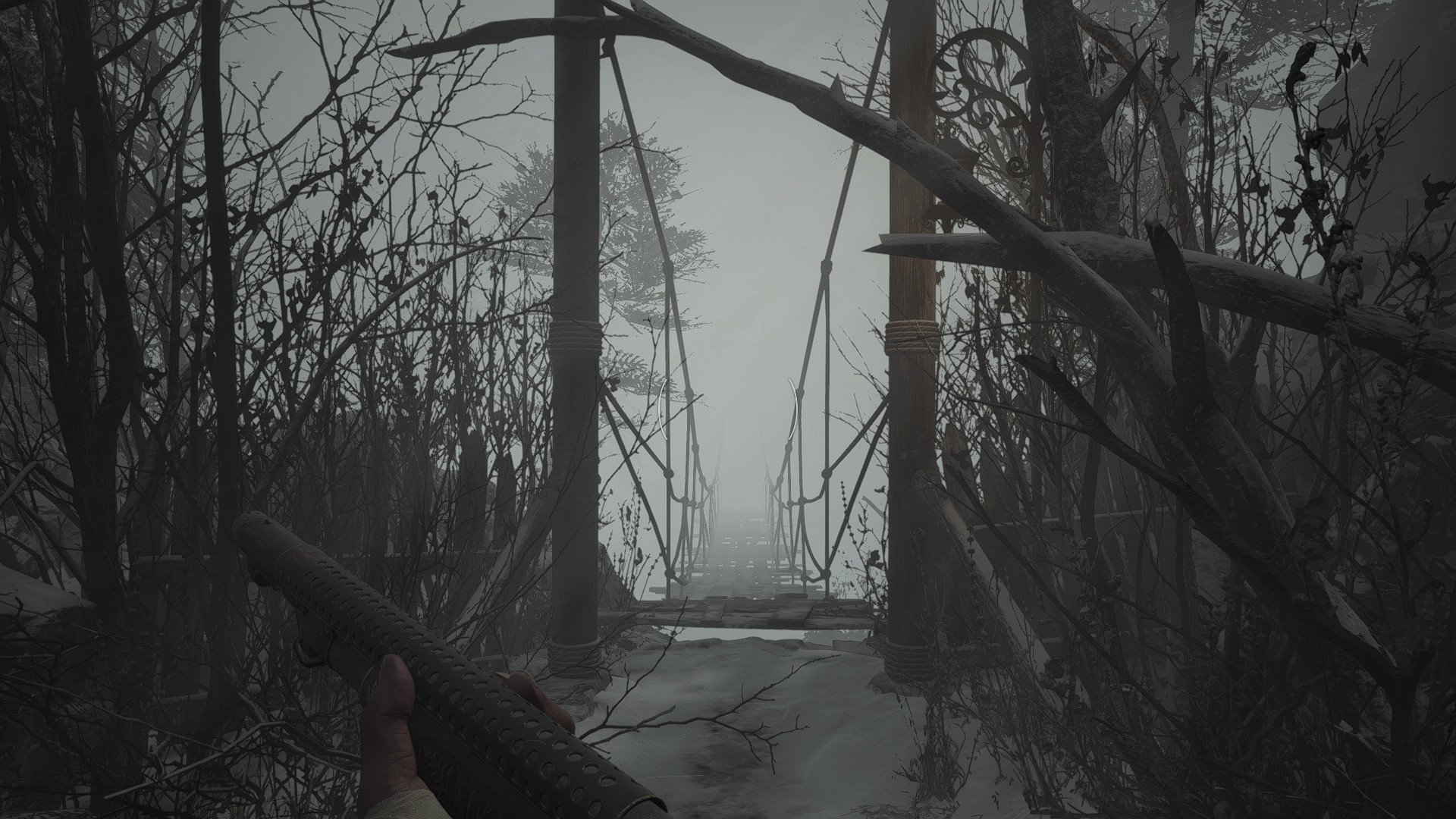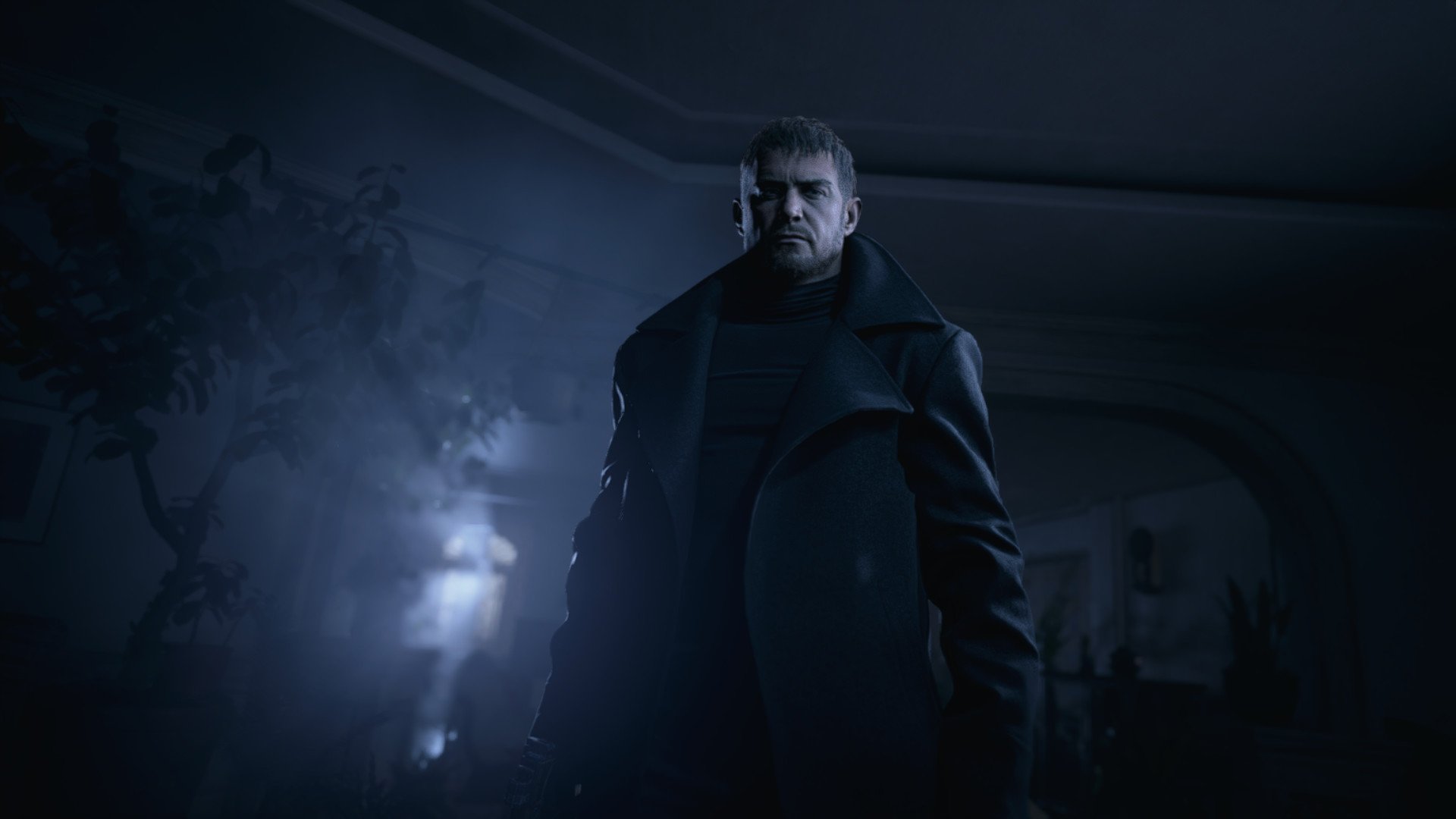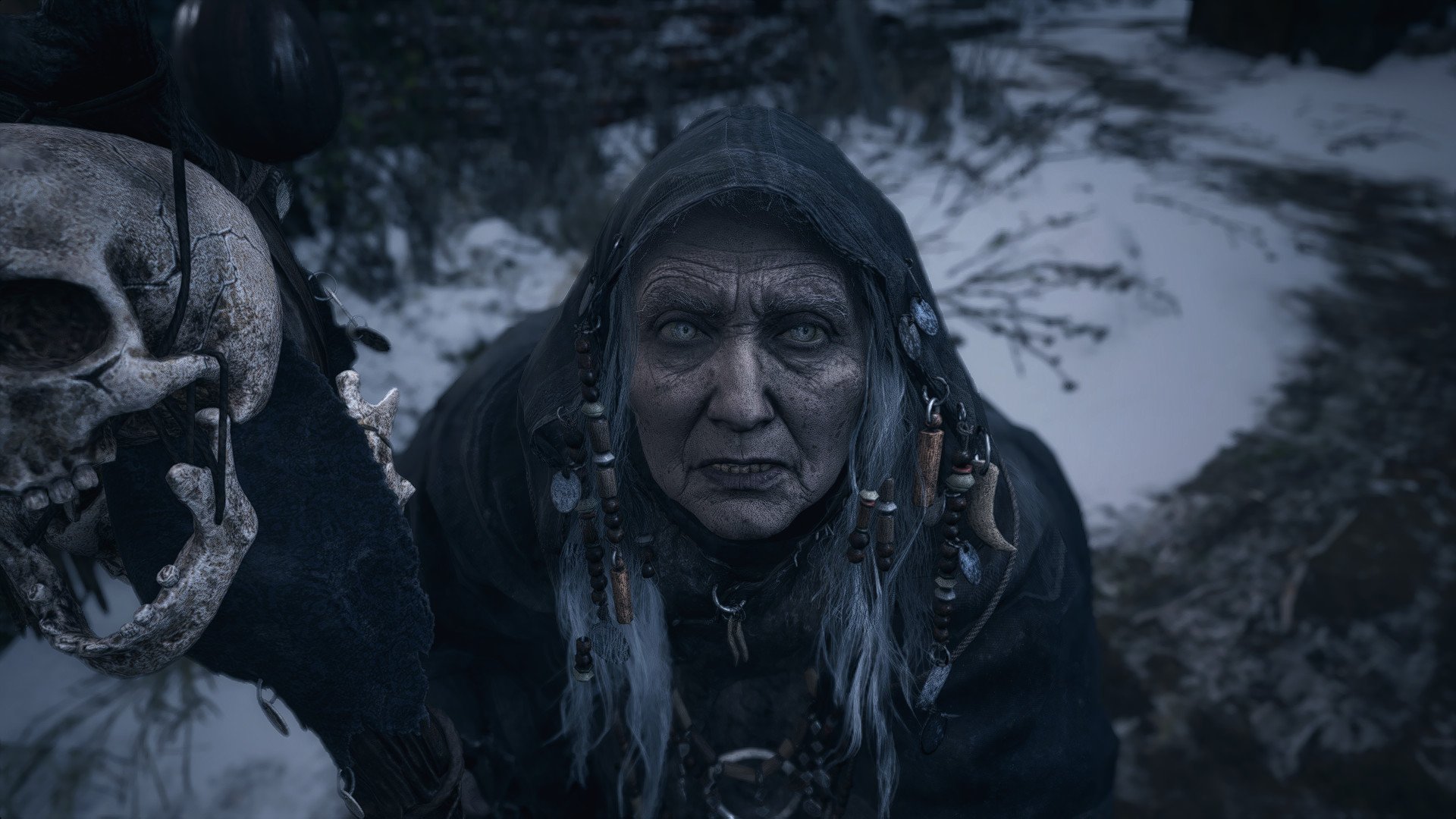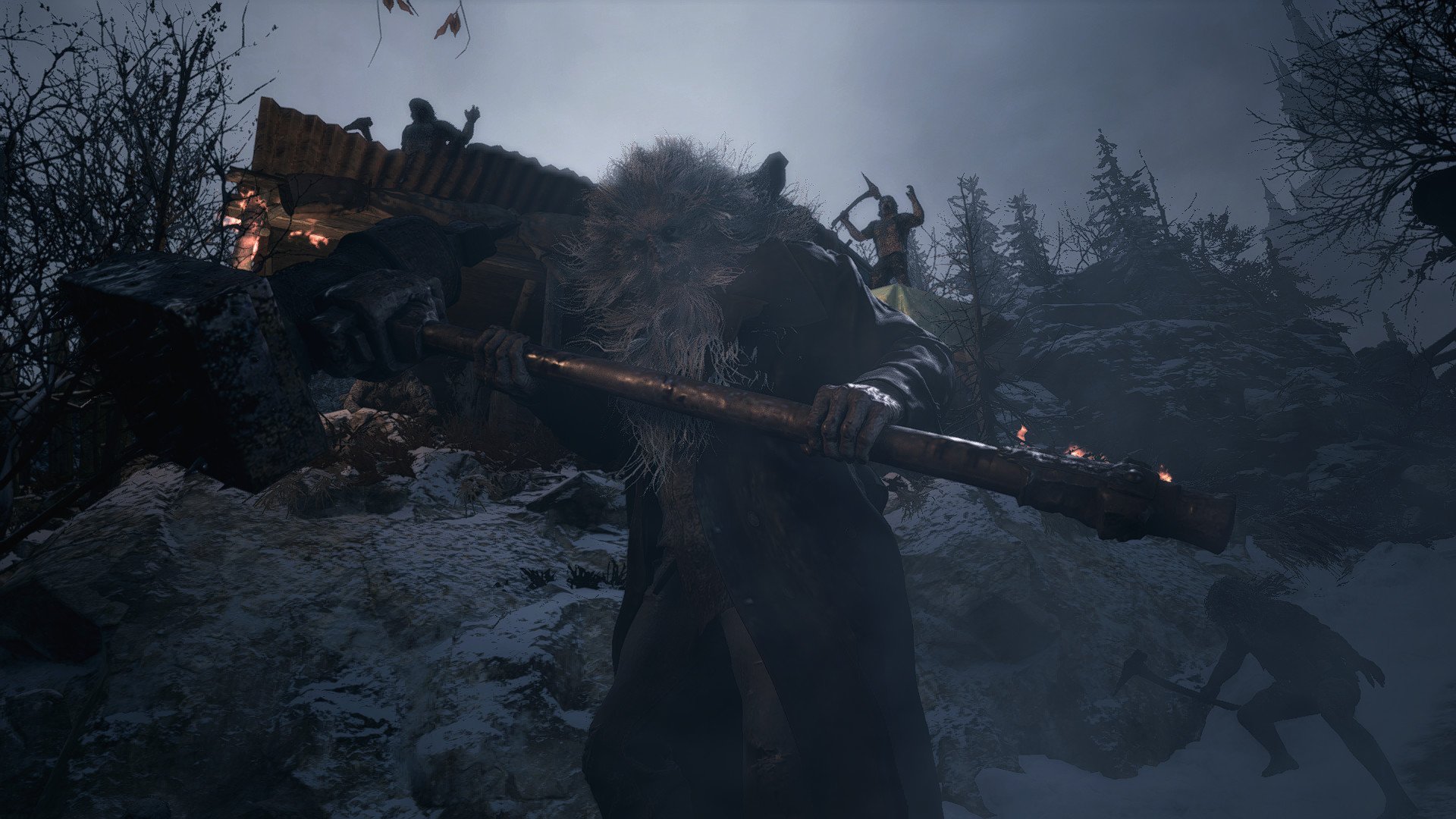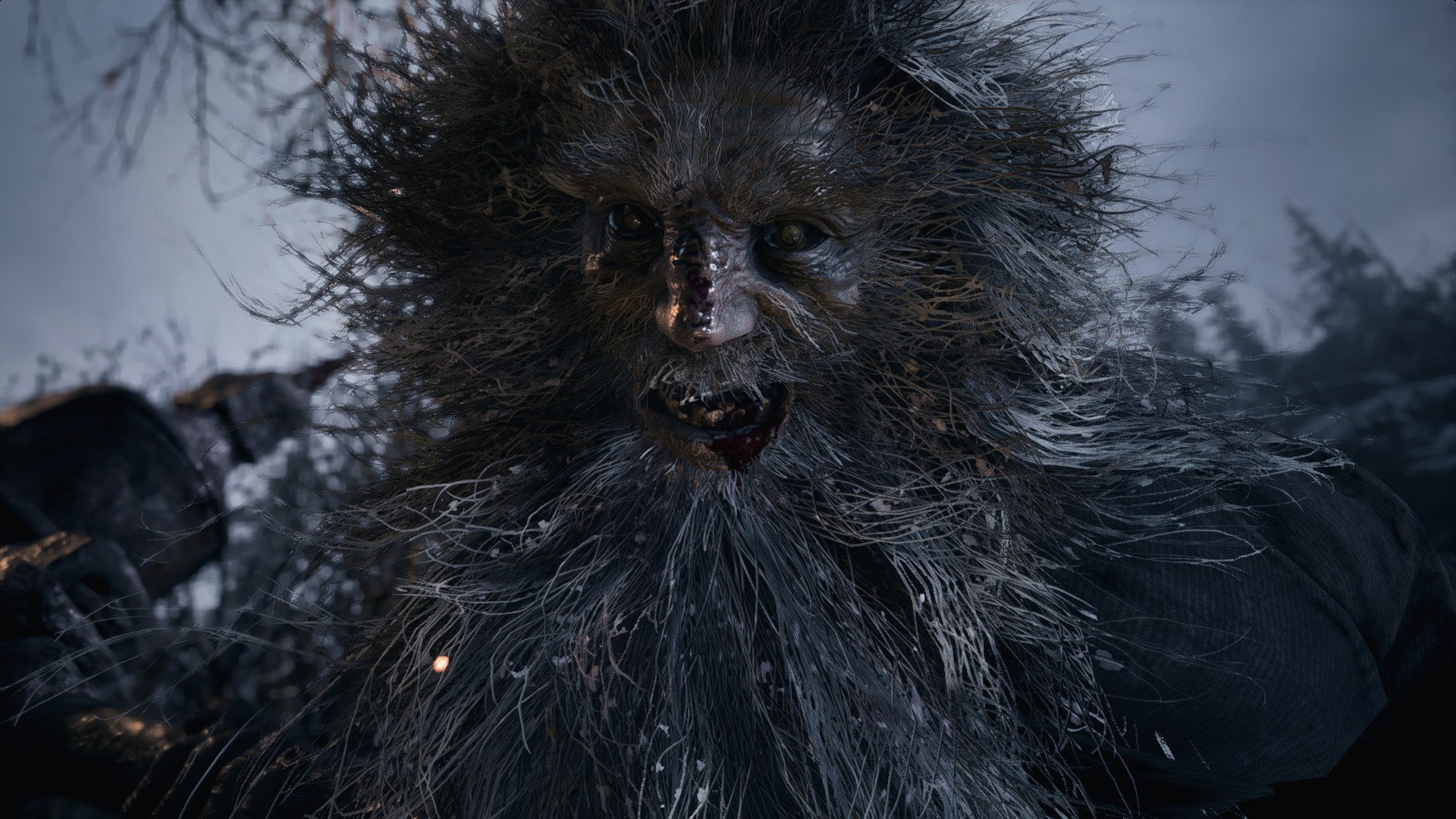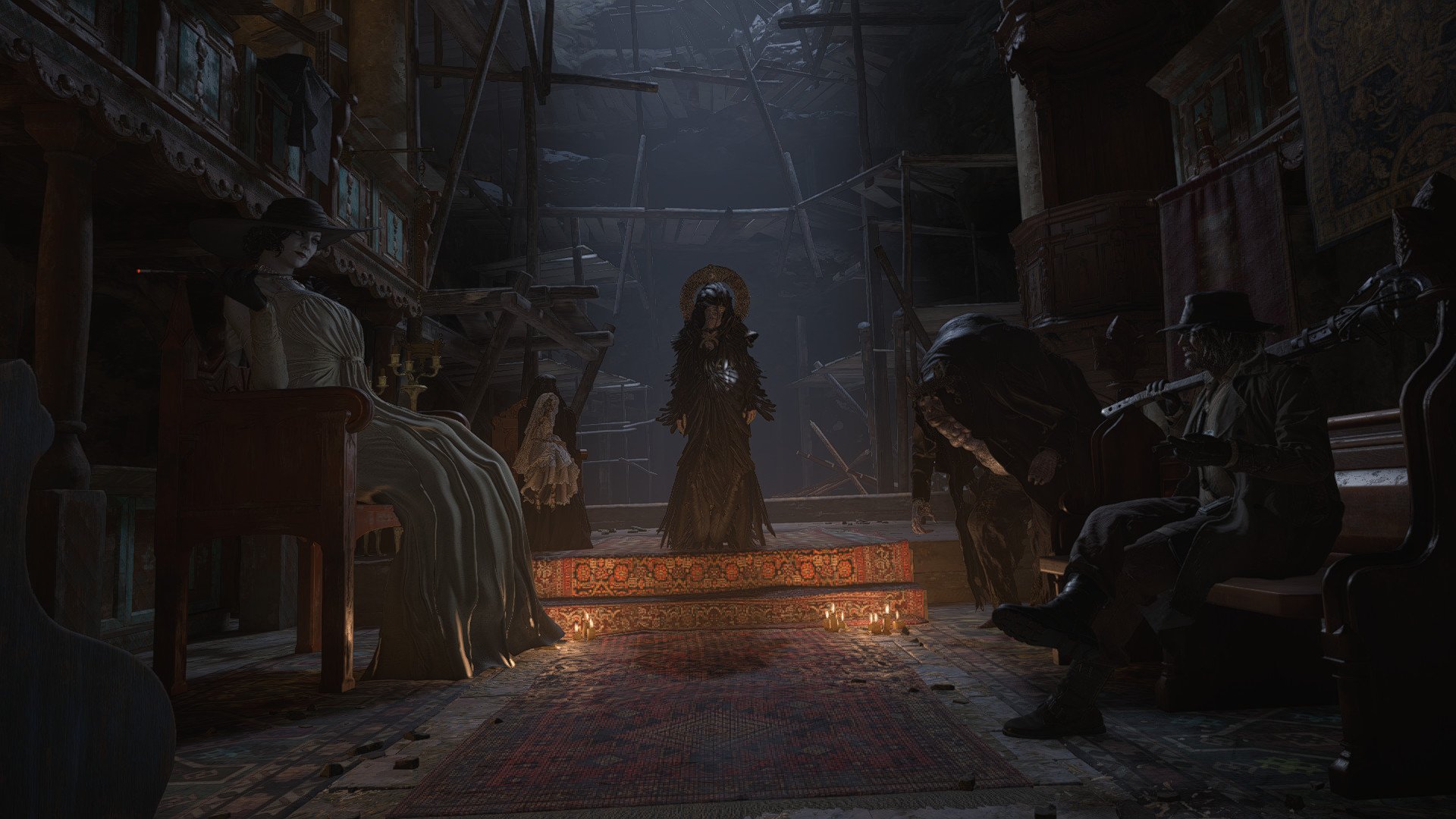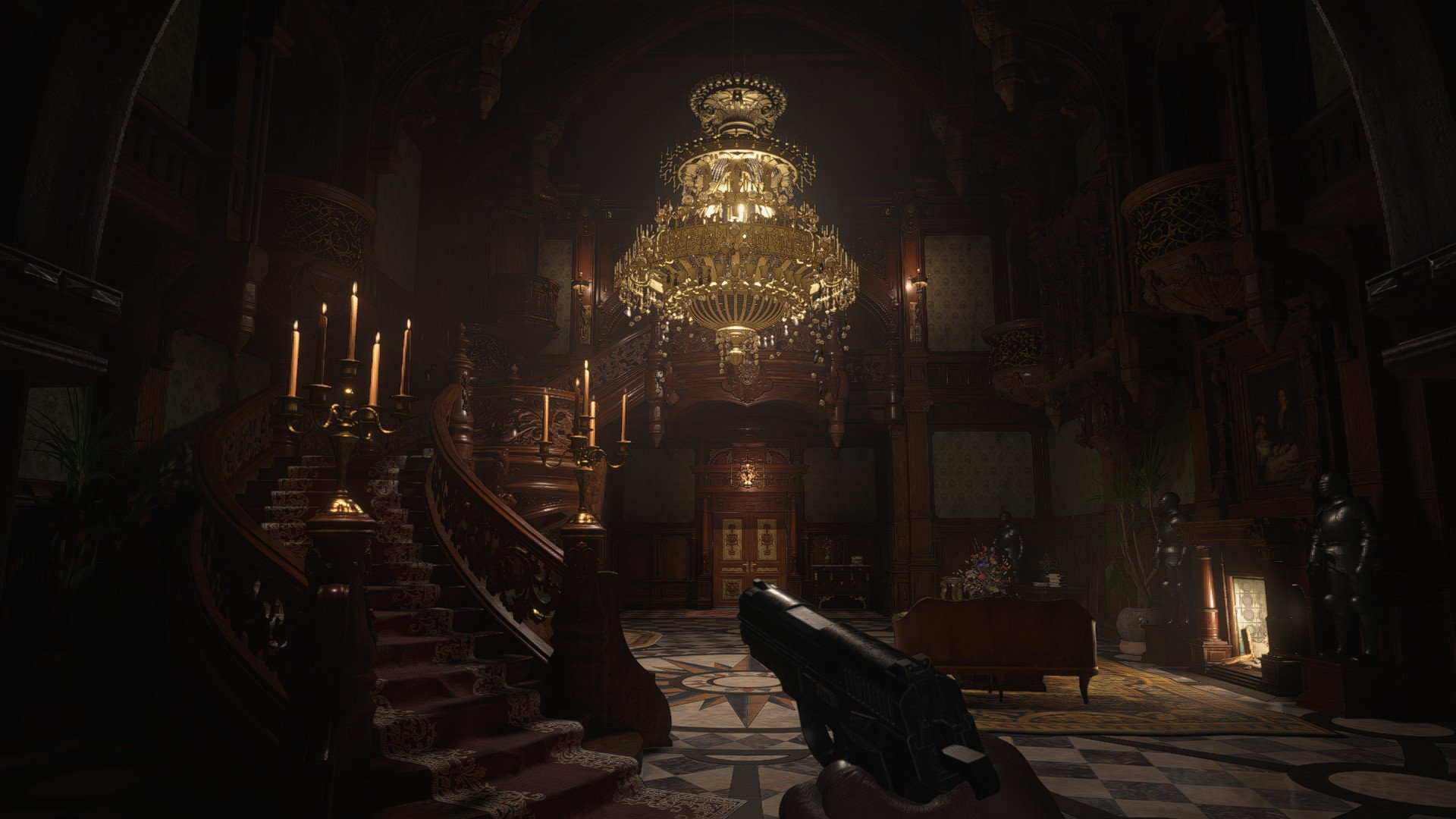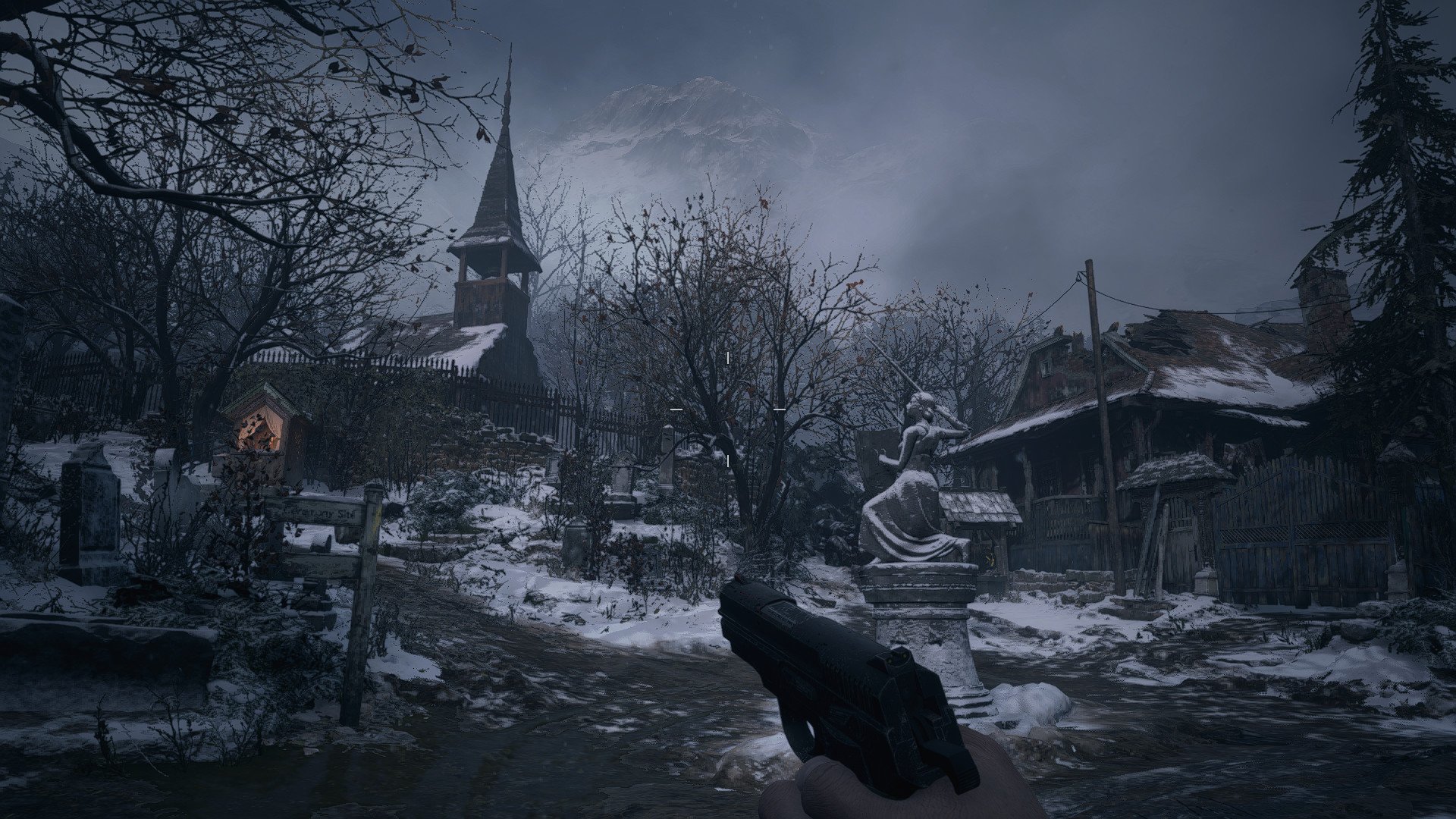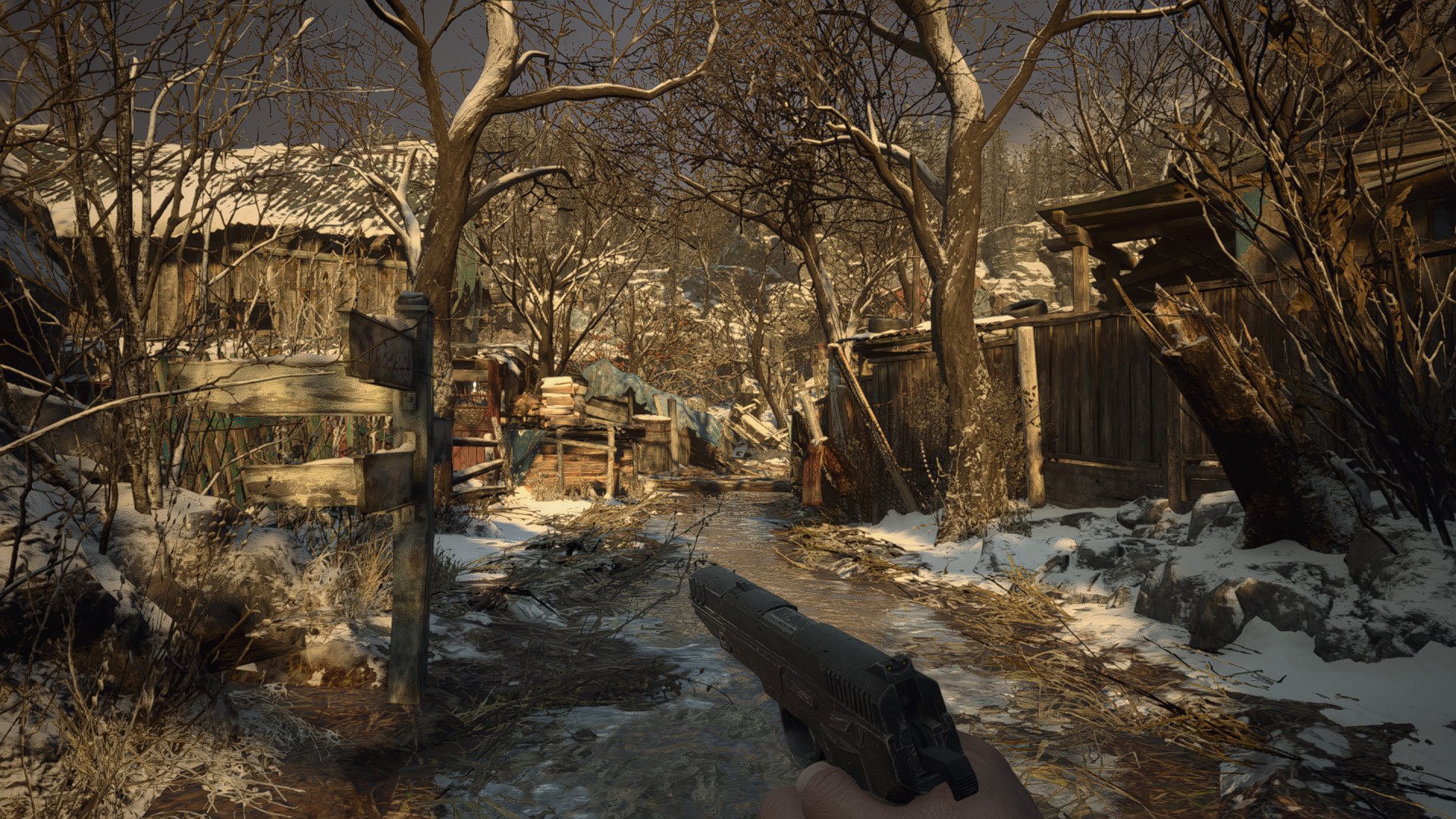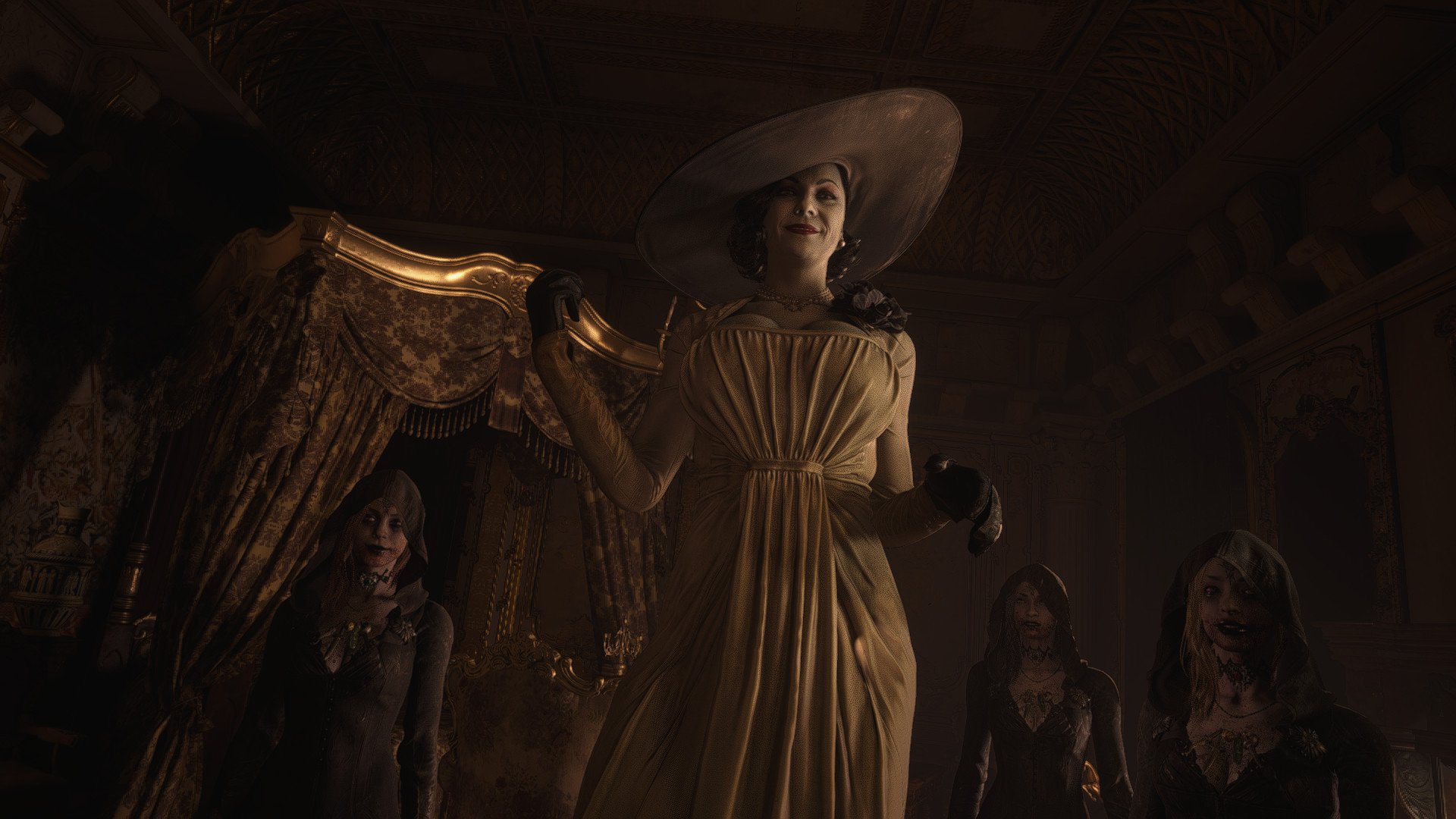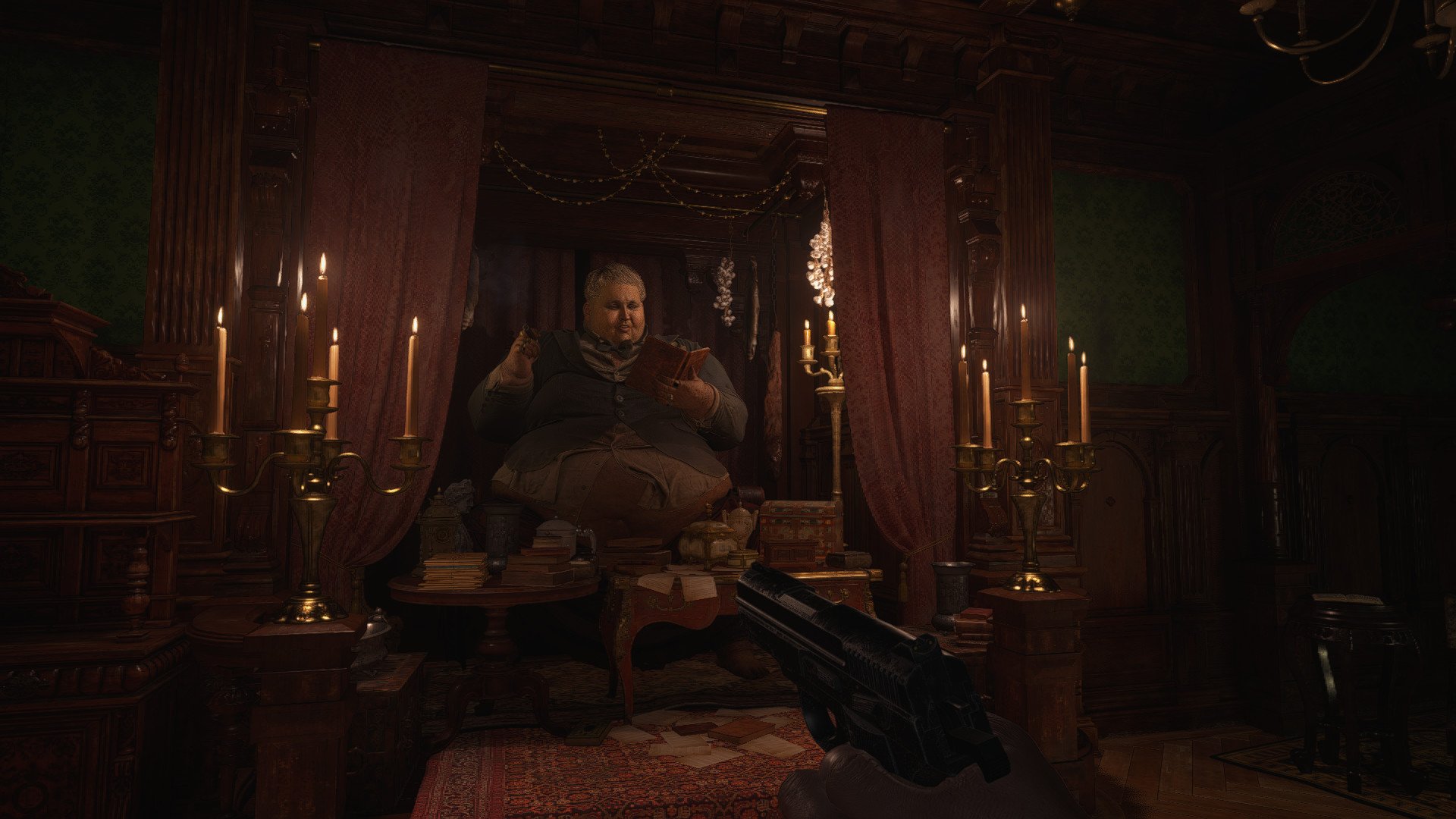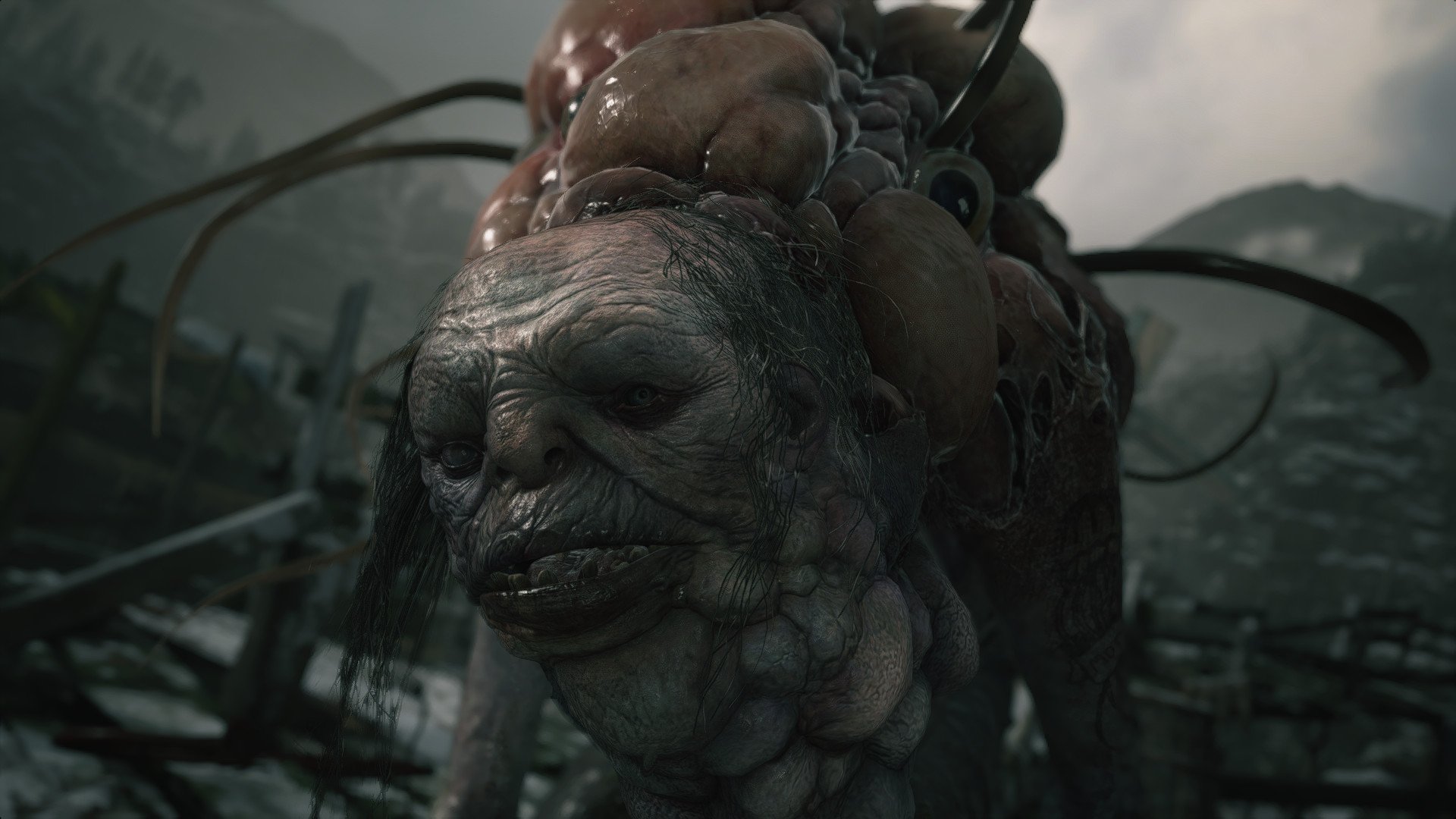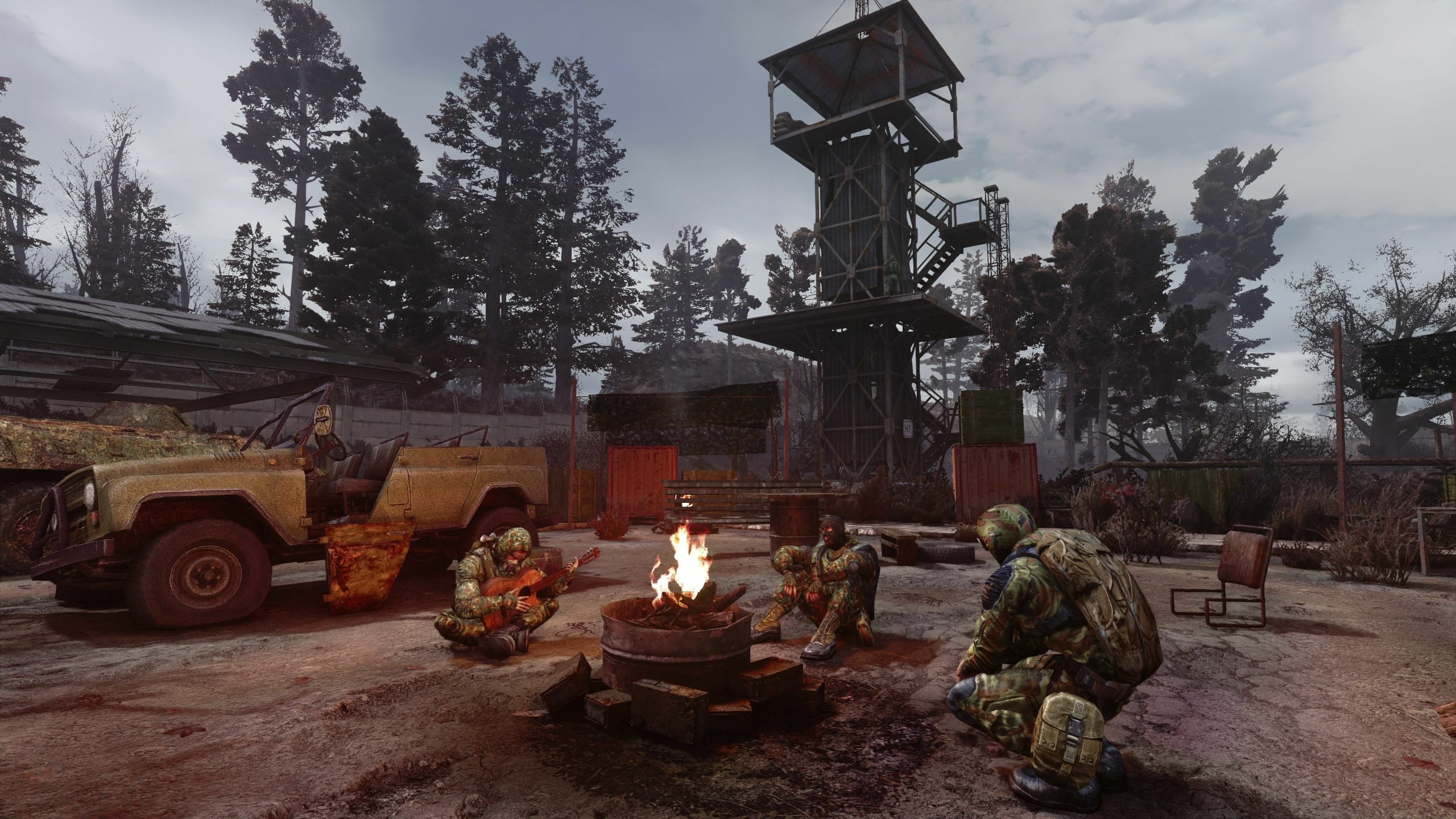
Resident Evil is a globally recognizable horror franchise with decades of history under its belt. After the series began to dip with Resident Evil 5 and 6, Capcom took the game back to the drawing board in some ways, revitalizing the franchise with Resident Evil 7: Biohazard.
Back then, I described Resident Evil 7 as having risen from the dead, much like the undead creatures that stalk its dark hallways and decrepit corridors. The franchise found its footing by bringing back much of what made the classic games legendary while switching to a fresh first-person gameplay style, complete with a new protagonist named Ethan WInters
Resident Evil Village, essentially Resident Evil 8, is the continuation of Ethan's story. Following the events of Resident Evil 7, Ethan and his family decide to begin a new life in Europe, far from the horrors of the previous game. For a while, things seem to be going well, but it all goes south very quickly.
Resident Evil Village is another success story for the franchise, with some staggering technical prowess and a range of unexpected twists and turns. In some ways, Resident Evil Village feels like a celebration of the entire franchise, with various gameplay aspects of previous titles explored and amplified in grotesquely satisfying new ways. I suspect Resident Evil Village will be remembered as another major high point for the franchise, despite some odd story choices and muddled pacing. Overall, I thoroughly enjoyed my time in the Village, despite being quite petrified for most of it.
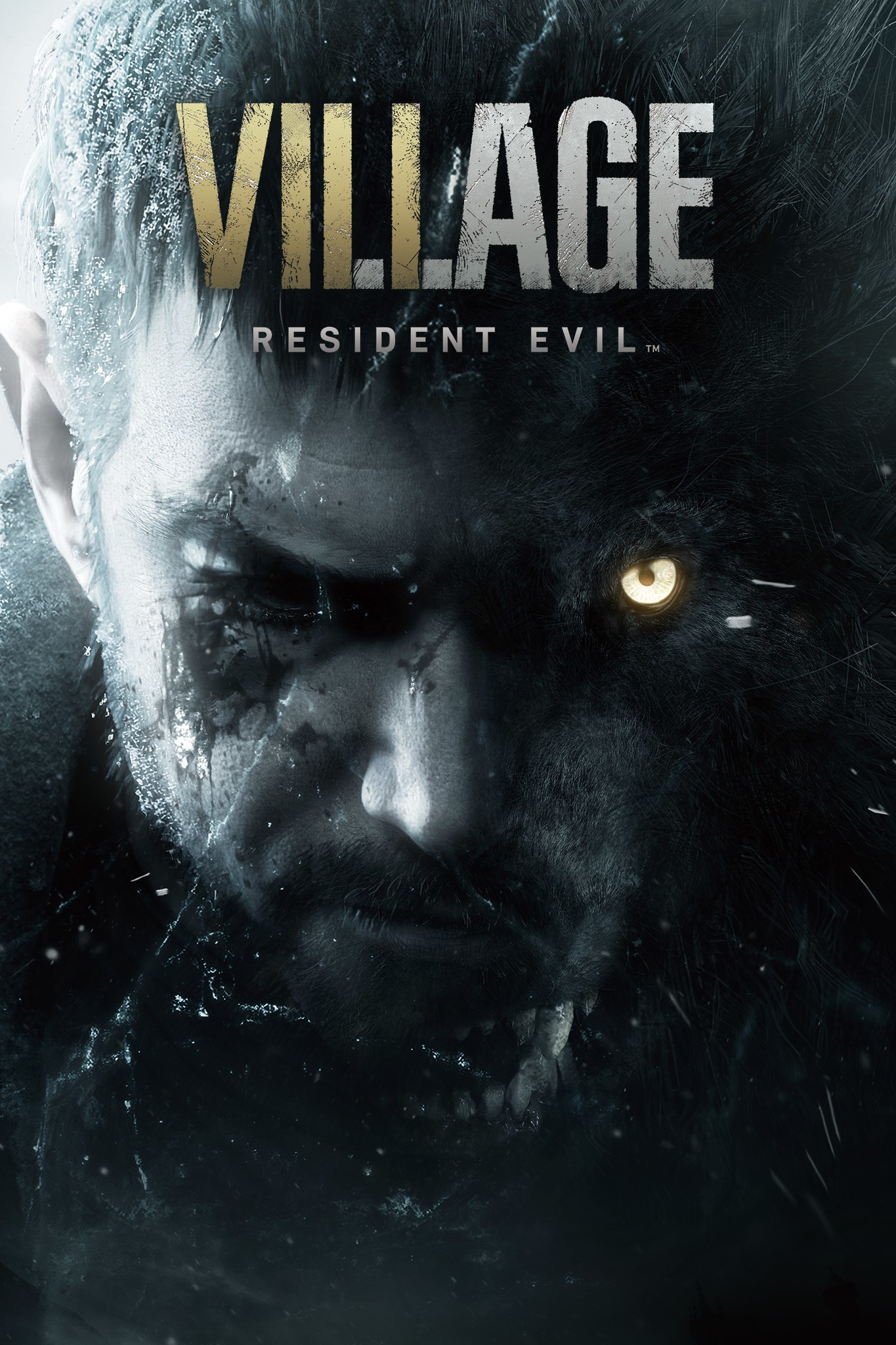
Bottom line: Resident Evil Village is one of the first games that feels truly "next-gen," with absolutely stunning tech bolstered by the industry-leading RE Engine. Stunning visuals, truly bizarre creatures, a memorable parade of eccentric characters, and truly satisfying gameplay make Resident Evil Village soar, even if a few quirks in the plot delivery deflate the spectacle. Resident Evil Village is a truly excellent game and one of the best entries in the legendary franchise. Long may it continue.
Pros
- Absolutely stunning visuals
- Large variety of environments
- Plenty of exploration opportunities
- Varied menagerie of mangled monstrosities to battle
- Hauntingly atmospheric with memorable characters
Cons
- Key story elements don't make a lot of sense
Resident Evil Village: Visuals, Sound, and Performance
| Category | GameNameXXX |
|---|---|
| Title | Resident Evil Village |
| Developer | Capcom |
| Publisher | Capcom |
| Genre | Survival horror |
| Minimum Requirements | Windows 10 (64 bit), AMD Ryzen 3 1200 / Intel Core i5-7500, 8GB RAM, AMD Radeon RX 560 with 4GB VRAM / NVIDIA GeForce GTX 1050 Ti with 4GB VRAM, DirectX 12 |
| Game Size | TBD |
| Play Time | 8-10 hours |
| Players | Singleplayer |
| Launch Price | $60 |
Resident Evil Village continues Capcom's winning streak for technical prowess, with the RE Engine's most impressive outing to date. I reviewed Resident Evil Village on my Razer Blade 17 Pro, with an RTX 2070 GPU and Core i7-10875H, with 16GB RAM. I ran the game on custom settings at 1080p, maintaining a steady 60 FPS with ray tracing and other visual options maxed out.
Never once did my client crash to Windows, and I didn't experience any form of performance degradation even during the most intense sequences, save for one instance. One particular enemy's abilities flood the environment with hundreds of flies, which did indeed batter performance in some cases. If you're playing on a higher difficulty, this one particular enemy could get you killed by causing your frame rate to dip to a crawl. However, this only occurs at one point in the game, and is easily avoided, and may even be patched by the time the game goes live to the public.
On Xbox Series X, Resident Evil Village targets 4K 60 FPS, or "up to" 60 FPS with ray-tracing enabled. With ray tracing enabled, I did notice some performance degradation across the board, particularly in areas that were highly detailed. Texture resolution also takes a bit of a hit on the Xbox version, with the PC version offering far more fidelity even on my relatively modest RTX 2070 setup, albeit at lower resolution. There's potentially some more work Capcom can do to improve the performance on the Xbox version as tools improve, though. If you play with ray tracing disabled, you won't have any issues whatsoever.
All the latest news, reviews, and guides for Windows and Xbox diehards.
Where Resident Evil Village shines above all else is in its world design. Resident Evil Village represents world-class, state-of-the-art world-building and art direction, and competitors may spend many years trying to catch up to. Gorgeous fog and smoke effects, ray-traced lighting with realistic dynamic shadows, and truly intricate levels of detail coalesce to make Resident Evil Village a stand-out and exemplary example of the medium.
Source: Windows Central
Resident Evil Village's soundtrack is subtle but powerful, intertwining with impressive ambiance and sound work to create a suitably haunting atmosphere. As I note in the next segment, each primary area of Resident Evil Village feels very much like its own character, with specific designs that are intrinsic to the characters they represent. The sound treatment follows suit, although I did find myself bereft of that classic save room music of yesteryear.
My only real gripe with Resident Evil Village's sound design pertains to the English localization, specifically how odd it felt to have inhabitants of a hidden, Eastern European village with modern American accents. I appreciate wholeheartedly that it would be an expensive endeavor, and am painfully aware that this is very much an anglo-centric problem. It's not a big deal, but it broke the experience slightly, particularly given how immaculate the rest of the game's design is.
Overall, Resident Evil Village is an absolute stunner of a game and proves once again that the RE Engine is not to be underestimated. Resident Evil Village slithers into your senses with some truly harrowing presentation, and you can feel the love Capcom poured into the game at every turn.
Resident Evil Village: Story and Setting (No Spoilers)
Without spoiling any major plot elements, Resident Evil Village delivers a compelling story for the most part, with some of the best and most memorable characters in the series. I do have some minor gripes, particularly towards the end, but RE:V is a meaty 10-hour experience that will be remembered as one of the most noteworthy entries in the franchise.
Resident Evil Village really represents world-class, state-of-the-art world-building and art direction.
RE:V is largely set in an un-named settlement somewhere in Eastern Europe. The village is nestled high up in the mountains, and as a result, produces some truly jaw-dropping vistas and visuals. I don't think I've reviewed a game previously where it felt like I could get a screen capture every few minutes, owing to the meticulous detail and thoughtful design in the game's continuous world. This isn't an open-world game in the traditional sense, but the fact you can look across the map from the top of Castle Dimutrescu and effectively see across the various segments of the game is an impressive feat.
Indeed, Resident Evil Village is segmented quite nicely into different biomes, each with a unique theme, typically centered on one of the game's several antagonists. Ethan and his family are effectively kidnapped at the start of the game, for reasons unknown, and whisked away into the mountains against their will. Ethan's daughter is missing, and he sets off into the endless woods, following signs of bloodshed and gore along the way.
Source: Windows Central
Notably, series staple Chris Redfield seems to have switched sides. Redfield previously helped Ethan and his family set up a new life in Europe, but for reasons unknown, Chris turns traitor and attacks them. Ethan escapes the carnage, and resolves to save his daughter, Rose, and ultimately survive this new ordeal.
The village is deserted when Ethan arrives, in classic Resident Evil fashion. Signs of torture and struggle are everywhere, with strange guttural cries haunting the ambiance. It's not long until Ethan is set upon by lycanthropic beastmen, and is eventually introduced to the game's headline antagonists, each twisted in unique and horrifying ways.
The famous Lady Dimitrescu looks ripped straight out of a 1950s horror flick, complete with a monochromatic color pallet and vintage garb. Heisenburg can manipulate magnetic fields, creating weaponry out of scrap metal at a mere whim. Lady Beneviento mysteriously stands quiet, allowing her sinister marionette Angie to exact her will, while Moreau lurches off to the side, decrepit and more mutated than the others.
At their head is Lady Miranda, who the villages seem to worship as some sort of god. If Ethan is to survive, you have to deal with each of Miranda's "children" in turn, and ultimately escape the nightmare by any means necessary.
The game's antagonists really do steal the show here, even if their nature and motives aren't exactly clearly defined at times. Each boss has its own domains, complete with unique designs and themes, as well as enemies. Dimitrescu's castle is a winding medieval manor filled with hidden passages and haunted catacombs, teeming with failed experiments and the undead. Beneviento's manor is perched high up on a clifftop at the back of an ancient graveyard. Moreau is alone in an abandoned fishing village, and Heisenberg has set up in a factory outside of town that deals in unknown products.
Some of Resident Evil Village's setpieces are truly demented and will leave even the hardiest horror vets agape.
Without giving too much away, some of Resident Evil Village's setpieces are truly demented and will leave even the hardiest horror vets agape. As you progress, the layers of the story unravel, revealing various twists and turns that tie Ethan's story to the wider canon. I felt like some of the motivations of the game's enemies don't necessarily make sense, and in some ways even contradict each other. It also feels like the writers realized some of these loose plot points at the last minute, and try to explain away some holes with a couple of quick lines of injected dialogue that felt otherwise out of place.
Resident Evil isn't necessarily known for its coherency at this point, and I had hoped that Ethan's story arc was an attempt to bring it back down to earth somewhat, so to speak. Alas, I can firmly say that this isn't the case with Resident Evil Village. Regardless, the spectacle is incredible and, well, just plain fun. Capcom embraces the madness of Resident Evil's wider plot, giving Resident Evil Village a demented parade of incredible "what the $%£" moments that will stay with me for some time.
Resident Evil Village: Gameplay
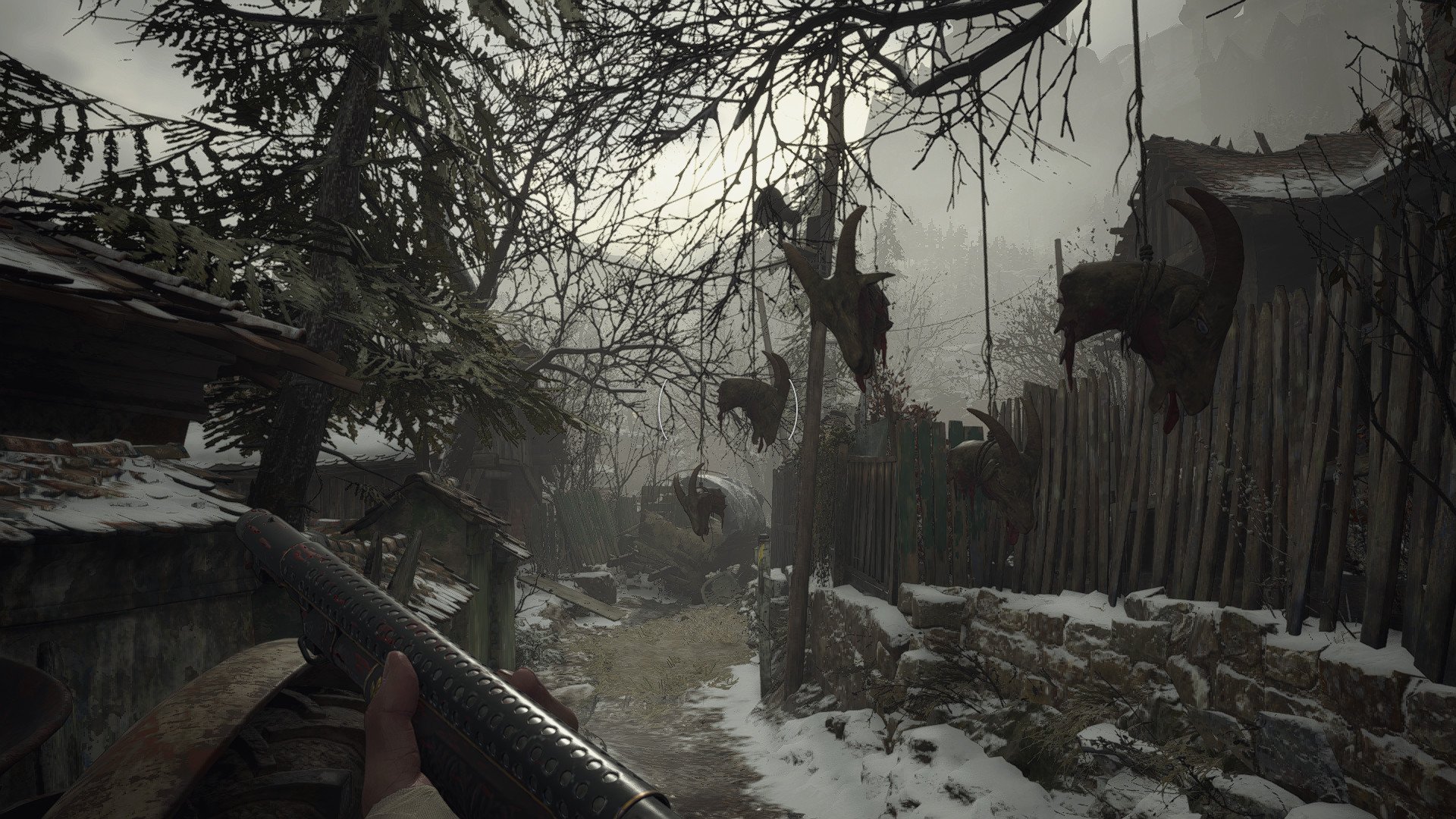
With Resident Evil's 25th anniversary coming up, it really does feel like Resident Evil Village tries to celebrate every dimension the franchise has explored with Village's setting, with enough meat to satisfy every sensibility. Each segment of the game represents a different period in Resident Evil's design history. Some feature more classic, darkened mansion-style mazes, complete with backtracking, secrets, and exploration while others lean on more linear action-oriented sections that riff on the likes of Resident Evil 4, 5, and even Revelations. I feel like Resident Evil Village takes what Resident Evil 6 attempted to do with its diverging styles, and executes it with far more grace and confidence.
Taking cues from Resident Evil 4, Resident Evil Village features a currency and loot system where enemies can drop treasures that can be traded into a mysterious Duke vendor, who can provide weapons and other goods. As a fan of the classic Resident Evil games, I often felt this design sapped a bit of the tension out of the game. If you can immediately tell when an enemy is dead because they dropped loot, it robs the fear factor of not knowing if you really finished off that zombie or not.
To make up for it, Resident Evil Village throws in a bunch of Mr. X-like enemies that are far more powerful, and won't go down unless you're willing to expend a mountain of ammo or utilize special environmental cues to your advantage. Other segments limit your access to the Duke, allowing Resident Evil Village to ramp up the tension and force you into a more classic ammo-conserving mindset. There are times when your best option will be to run away and even create barricades using objects you can find in some of the game's houses.
To that end, Resident Evil Village manages to explore the more tense gameplay styles of yesteryear while also rewarding the player for seeking treasure, exploring the game's many secret areas, and even hunting optional bosses. There are even special animals to harvest for permanent health upgrades, made from dishes provided by the Duke. Resident Evil Village provides plenty of reasons to backtrack to previous areas too, which often give hidden plot details or those all-important weapon upgrades.
Source: Windows Central
Ethan notes at one point that Chris provided him and his family with some military combat training for self-defense. Going back to Resident Evil 7, where Ethan wields a knife like an oven poker and moves with the same urgency as dial-up internet, the difference in combat efficacy is quite stark.
As a result, I'd argue that Resident Evil Village isn't as scary as Resident Evil 7 — at least generally. Ethan simply doesn't feel anywhere near as vulnerable. That being said, there are a couple of segments where Capcom kind of says "we can still do scary if we want to, here's the proof" — and you may wish they hadn't.
Even though Ethan is a bit more of a killing machine in Resident Evil Village (at least on normal difficulty), that doesn't make it any less fun. The gunplay in Village remains tight and satisfying. At first, you might feel like enemies are a bit spongey, but a few weapon upgrades later, you'll be popping skulls with reckless abandon. Ethan also has a new reactive attack which lets you knock enemies back after performing a block. Pulling this off correctly could be the difference between life and death in trickier spots, and will be key to remaining efficient in your resource management, particularly on higher difficulties. Indeed, after completing the game, an even more challenging difficulty is unlocked for the more extreme gamers among us.
The sheer diversity of the game's locations also extends to the range of enemy combatants. I really don't want to spoil what disturbing surprises lay in wait for you, but there are enemies and creatures in Resident Evil Village that I would never have expected to see emerge from Capcom.
There are your standard Resident Evil 4-style villager zombies, ranging all the way up to utterly insane sci-fi monstrosities that you might have sooner expected to see in Silent Hill or The Evil Within. And sure, they do push the boundaries of what you might expect would be theoretically possible in this universe, but I feel like that ship has long sailed, and they at least provide some in-game explanations for some of it.
Often I feel like games that try to do too much in terms of gameplay style often underdeliver in other areas. Resident Evil Village, however, strikes a good balance. The broad variety of weapons, the truly epic (and numerous) boss fights, the diversity of the enemies and locations, and the strong line-up of post-game content make Resident Evil Village a true joy to play, cover to cover. Some of the pacing gets a bit wild towards the end, but it's by no means what I'd call a deal-breaker, and honestly, it's almost self-referential at this point for the franchise.
Resident Evil Village, like Resident Evil 7, continues to foster my love and adoration for this legendary franchise. It's weird, wild, and barely makes any sense at times, but that's fine. I'm here for the ride, and what an amazing ride it is.
Resident Evil Village: Should you play it?
Source: Windows Central
Resident Evil Village is a truly great entry in the franchise that celebrates not just Resident Evil, but refers to various classic horror movies and other media. I noted a cheeky reference to The Ring, another nod to Jaws, an homage to Chucky, and various others. The game also ties in neatly to the wider Resident Evil lore, leaving you hungry for more after its bombastic conclusion.
As much as I enjoy some of Resident Evil's more bombastic and outrageous moments, some of the ways Capcom tries to create spectacle fall flat at times and almost come across as comical. It's a shame because it's proved time and time again across Resident Evil 7, the Resident Evil 2 Remake, and even Resident Evil Village that it's capable of dialing it back to make something a little more believable. That's mostly personal preference, though. There's absolutely nothing wrong with some of Resident Evil Village's more gratuitous plot moments if you're willing to suspend your disbelief.
Resident Evil Village is another great entry in what continues to be one of my favorite franchises of all time. As a young lad, I recall picking up the original Resident Evil for my 10th birthday (unbeknownst to my parents how violent it was going to be) and have been enamored with the series ever since. I've seen Resident Evil transition from its humble roots into a blockbuster franchise with mainstream attention. In a world where AAA horror games are so incredibly rare, Capcom continues to prove that not only can they work, they can thrive.
Ultimately, Resident Evil Village proves once again why this series is the most successful horror video game franchise of all time.

Bottom line: Resident Evil Village is a tour de force of visual excellence, incredible art direction, satisfying shooter gameplay, wrapped in a harrowing horror atmosphere. With a 10-hour campaign and strong post-game content, Resident Evil Village is another excellent addition to this storied franchise and is easily one of the best Xbox games of the new generation.

Jez Corden is the Executive Editor at Windows Central, focusing primarily on all things Xbox and gaming. Jez is known for breaking exclusive news and analysis as relates to the Microsoft ecosystem while being powered by tea. Follow on Twitter (X) and tune in to the XB2 Podcast, all about, you guessed it, Xbox!
